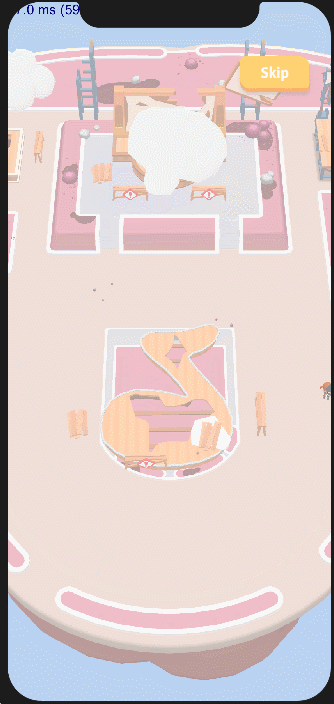Merge Skyland
Casual Merge Game
This is a casual merge game shipped in November 2021 globally. In this project, I am responsible for the level and numerical design. I participated in the entire development process of the project and all its features. In this project introduction, I only list several things I learned from this project.
Demo Video
Project Info
-
Platform: Mobile (Android&IOS)
-
Date of Completion: 2021.11
-
Category: Casual Merge Game
-
Controller: Mobile Phone
-
Art Style: 3D Cartoon
-
Preferred Resolution: N/A
-
Contribution: Lead Level and Numerical Game Designer
-
Team Size: 4 Designers, 4 Programmers, 12 Artists, 2 QA
-
Download Link: Merge Skyland
-
Install Instruction:
-
Download the game from Google Play in an Android Phone.
-
Start the game.
-
Background
My superiors appreciated my previous work performance and asked me to join this project team in March 2021. Through the research of the marketing and publishing department, it is found that casual merge games have a larger market in the world, so the producer decided to make a game of this genre and invited me to be responsible for the level and numerical design. I designed a basic game framework with other game designers, and quickly developed and optimized it with programmers and artists, and successfully launched it on Google Play and App Store in November 2021. Currently, we are still optimizing this game.
Game Framework
The main gameplay of this game is to merge items, submit orders, build and decorate the game world. Players can also become friends with NPCs in the game, learn their stories, and collect postcards sent by them. In addition, players can also participate in various game activities with friends they meet on Facebook.
There are some resources in the game, which are used to connect each gameplay. The following is the basic framework for each gameplay and resources.
Level, Art and Activity Design


3D Models and Animations

Difficulty Curve
We hope that the game can attract players, which requires that a certain game duration must be guaranteed every day. As an "FTP" mobile game, it must be able to attract players to pay. Therefore, there are three data indicators that I must consider when doing level and numerical design:
-
Retention rate.
-
Game duration every day.
-
Game pay rate.
In order to achieve these goals, considering the gameplay framework, my design needs to have the following characteristics:
-
Attractive main gameplay and art appearance.
-
Reasonable difficulty curve.
-
Appropriate payment tips.
In order to achieve these goals, I did the following:
-
I communicated with the artist team and listed the art resources I needed. In the end, they produced some great chess icons and 3D models I can use in building levels.
-
Through a lot of mathematical calculations, I assign a difficulty value to each item that appears in the game to control the player's experience.
-
I designed and developed some social and in-game activities to promote communication between players and enhance the playability of the game.
-
Based on the above points, I need to design some gift packages to encourage players to pay.
The following are some of my development processes.
Board Item Design
In-Game Features
Data Track Problems and Solutions
In the early stages of game testing, we found several problems that made it difficult for players to understand the gameplay. And the logs also reflect these problems.
-
Players keep merging items and forget to submit them to orders.
-
Players lack enthusiasm for decorating the game world.
-
Some orders are too difficult so players are unable to submit items.
To solve these problems, we have adopted the following adjustments.
-
Increase game guidance to allow players to fully understand the game loop.
-
Make 3D models and animations more refined, and add some unexpected animations to make players more enthusiastic about decorating their world.
-
Make the difficulty of the game change more smoothly, reduce the orders that are too difficult.
By constantly monitoring the game data, I can optimize the game more quickly, so as to provide players with a better gaming experience.
What I Learned
-
Design a commercial project from 0 to 1, and ship it to players.
-
Design a level and numerical framework for the game, and make it attractive for players.
-
Work more closely with programmers and artists to develop a game.
-
Monitor game data during game testing and continuously optimize the game experience.



